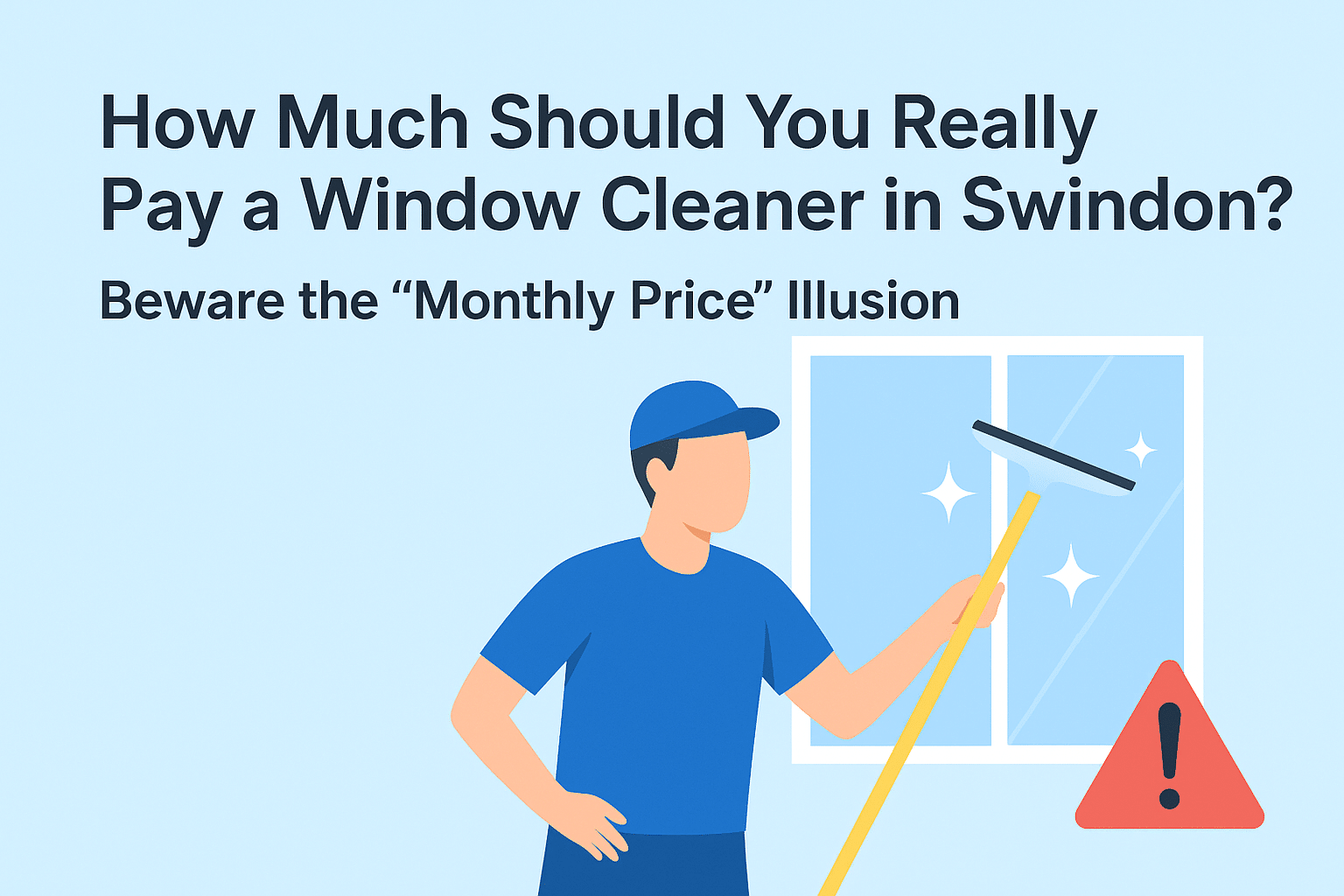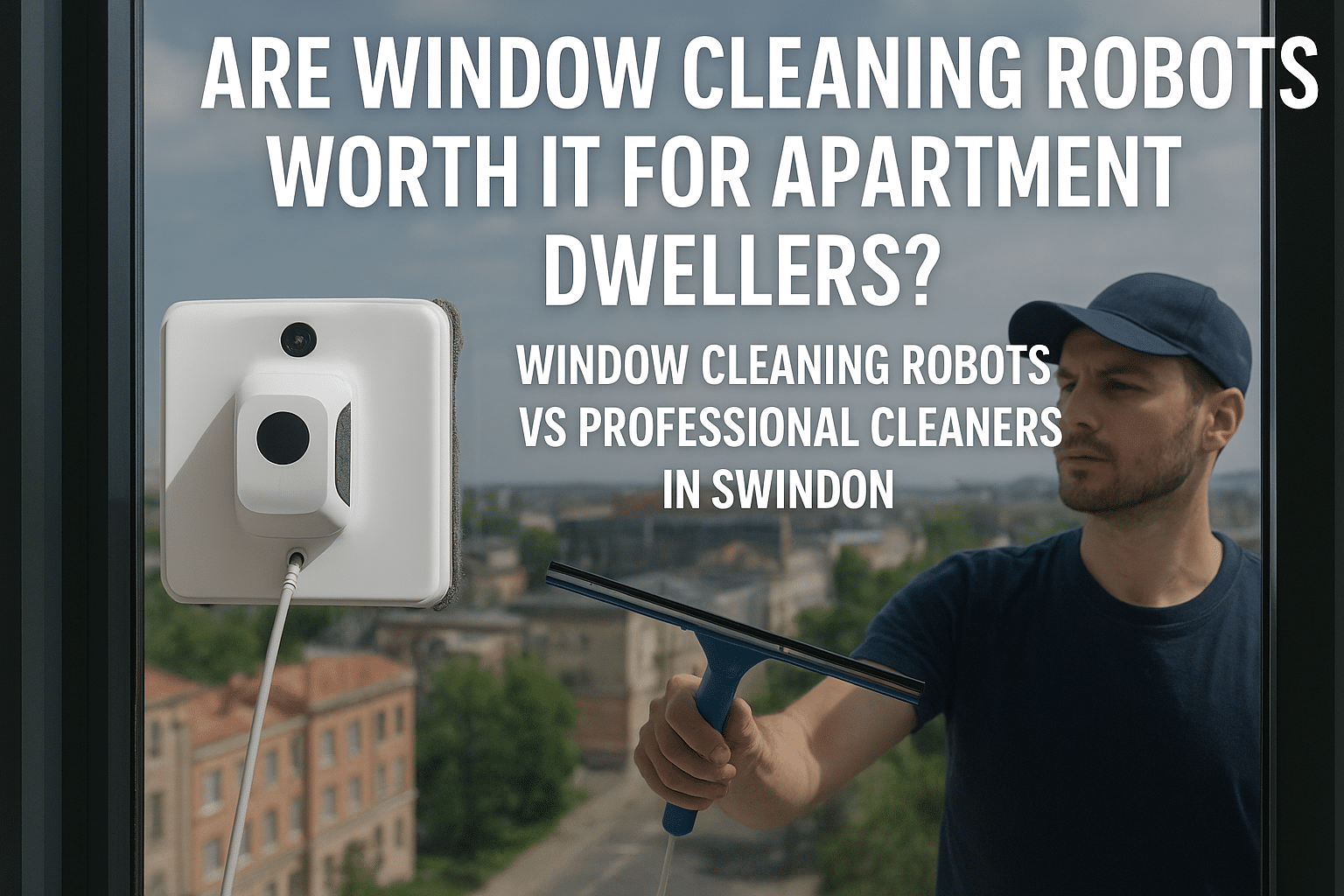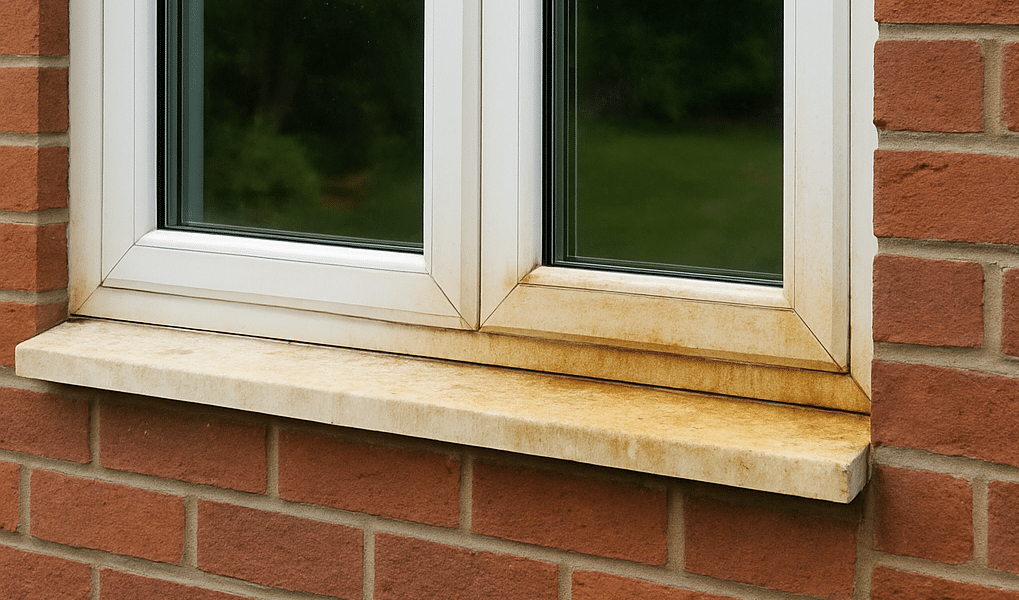Table of Contents
Beware the “Monthly Price” Illusion
If you’ve ever searched for a window cleaner in Swindon, you’ve probably seen deals that look like this:
“Regular window cleaning — from just £20 per month!”
At first glance, that sounds like a bargain. But many window cleaning businesses collect monthly payments even though they only visit every six or eight weeks. That means you might be paying monthly, but your windows aren’t being cleaned monthly — and the true cost per clean can be much higher.
The “Monthly Payment” Trap Explained
Most modern window cleaners now use a subscription model with payments made by Direct Debit. It’s convenient, but the cleaning frequency behind those payments varies:
- Monthly – every 4 weeks (≈ 12 cleans per year)
- 6-weekly – about 8.7 cleans per year
- 8-weekly – about 6.5 cleans per year
Even though you’re paying every month, you’re not necessarily getting 12 cleans per year. The result? The real price per clean can be 30–80% higher than it appears.
The Maths Behind the Illusion
| Advertised Price | Frequency | Actual Cleans per Year | Effective Cost per Clean |
|---|---|---|---|
| £20/month | Every 4 weeks | 12 | £20.00 |
| £20/month | Every 6 weeks | 8.7 | £27.59 |
| £20/month | Every 8 weeks | 6.5 | £36.92 |
| £25/month | Every 8 weeks | 6.5 | £46.15 |
In short, a cleaner visiting every eight weeks but collecting £20 each month effectively charges £37 per clean — not £20. The less often they visit, the higher the real price per clean.
Example Scenarios
Example 1: You pay £20 per month and get a clean every six weeks. That’s about nine visits a year. Effective cost per clean = £20 × 12 ÷ 8.7 = £27.59.
Example 2: You find a cleaner who charges £30 every eight weeks, paid after each visit. Annual cost = 6.5 × £30 = £195. Effective monthly cost = £16.25. In this case, paying per clean is actually cheaper.
Why Companies Use Subscriptions
It’s not necessarily deceptive — many cleaners prefer monthly subscriptions because it stabilises cash flow through quiet months. But for customers, it’s easy to assume you’re getting 12 cleans a year when you’re not.
How to Protect Yourself
- Ask how often they’ll visit. “£X per month” doesn’t always mean monthly cleaning.
- Calculate the real cost per clean: Monthly price × 12 ÷ cleans per year.
- Compare like-for-like. Check both frequency and what’s included (frames, sills, conservatories, etc.).
So How Much Should You Pay a Window Cleaner?
For typical Swindon homes, a fair going rate is around £20–£30 per visit for a regular exterior clean. If you see a “per month” deal, pause and do the maths — make sure you know how many times they’ll actually visit each year. That small check can save you £50–£100 annually.
We hope you found this article informative. Feel free to drop us a message if you have any questions or want an honest upfront quote.



![DIY vs. Professional Window Cleaning: Costs, Risks, and Results Side-by-Side [2025 updated]](https://windowhero.uk/wp-content/uploads/2025/09/DIY-vs.-Professional-window-cleaning.png)
